“Muchos recuerdan los viejos tiempos…” (Let’s recall the old good days) Trinidad is a town full of history, not revolutionary history but architectural. It is located in the province of Sanctis Spiritus in central Cuba from about 225 miles from Havana and was founded in 1514 by Spanish conquistadors ! Trinidad is renowned for its historic colonial center, which has been a UNESCO World Heritage Site since 1988. With cobble-stone streets and pastel-colored houses Trinidad is the best-preserved town in the Caribbean, giving the impression that time stopped during the Colonial area when the sugar trade was the main activity of the region… Wandering through its streets, you want to hum a Cuban remix of a song by the French singer Johnny Hallyday : “Je préfère le bon temps des espagnols / C’est la seule époque qui soit folle / Depuis toujours entre nous et eux ça colle / Depuis le bon vieux temps des espagnols” (I prefer the good time of the Spaniards / It is the only time that was crazy / Since the dawn of time between us and them it matches / Since the good old days of the Spaniards.) In the historical and tourist heart of the Playa Mayor the buildings with red tiled roof and pastel colors were mostly built in the 18th and 19th centuries. Today these colonial-era structures are home to museums such as the Museo Romántico o Palacio Brunet, inaugurated in 1973. This colonial-style house with its flamboyant yellow walls was built in two stages: the ground floor in 1740 and the floor above with a balcony in 1808 – a balcony from which Juliette has a breathtaking view of Romeo… oh sorry… of the square! To the Northeast of the square is the parish church of the Holy Trinity, the Santísima Trinidad Cathedral built between 1814 and 1892, as a hurricane had destroyed an earlier structure on the site. This Cathedral has five naves and a trio of bells, responding to the sweet names of Santísima Trinidad, Mayor and Nuestra Señora de la Consolación, but it is best known as the only neo-Gothic religious building in Cuba. A short distance from the Plaza Mayor stands one of the most famous monuments of Trinidad: the Convento de San Francisco de Asis, a former monastery built in the 16th century that now houses the Museo de la Lucha Contra Banditos, displaying exhibits on the organized struggle against the counter-revolutionary bands of 1960 and 1965. The 138-foot tall bell-tower, which adorns many postcards of Trinidad, offer superb view over the rooftops of the city.

Trinidad, pastel-colored houses
Even if the historical center should never be missed, it would be a shame to pass over other facets of the town: the constant animation that prevails in popular neighborhoods, with narrow cobblestone streets and small shops, wagons and horses, chickens wandering freely, and women sitting on the front steps of their house! It is very pleasant to get lost in the early morning discovering the colored low houses with large windows protected by wrought-iron grilles. These grilles serve to prevent the intrusion of unwanted visitors and allow residents to live and sleep with the open window so that air can pass through. Behind these large open windows, if you can get past Cerberus, the monstrous multi-headed dog in the Greek mythology, guarding the entrance, you can sometimes discover magnificent mansions. One can easily imagine the wealth of the landowners of the time, prosperous from the sugar and slave trade. Let’s continue our visit before Trinidad wakes up and plagiarize the French singer Jacques Dutronc, “Il est cinq heures / Trinidad s’éveille / Trinidad s’éveille / Les écoliers vont pédaler / Les cavaliers battent le pavé / Les magasins sont rationnés / C’est l’heure où je vais me balader” (It’s five o’clock / Trinidad wakes up / Trinidad wakes up / School children pedal / Horse riders beat the pavement / Stores are rationed / It’s time to go for a walk). It is true that in the morning we see queues in front of the state shops, also called “bodegas,” where the Cubans wait to get food with their ration book. In all of Cuba the shops have rather empty shelves, but Trinidad seems particularly poorly supplied. Moreover, at every delivery of consumer goods, it seems that the owners of the “Casas Particulares” (guesthouses) are often served first and that there is not much left for anyone else… Some essential consumer goods have been recently removed from the ration book such as soap, which must now be bought at a high price and often in CUC (the Cuban convertible peso or “tourist currency”). So do not be surprised to meet a kid or a mother at a street corner smiling and asking courteously for… some soap ! If so, do not get stuck in your soap bubble… Just share it, as Honoré de Balzac wrote, “Happiness is a bubble on a bar of soap that changes color like an iris does and bursts when you touch it” from “la Comédie Humaine”, beautiful, no ?

Trinidad, State shop
Since the move to legalized “own-account” businesses (small businesses are allowed, and even encouraged by, the Castro regime) small sellers have flourished everywhere. In this new world of cuentapropistas, the self-employed, any location can become a place of business: mini-shops, hand carts and even just a case on the luggage rack of the bike… Cuban inventiveness is not to be underestimated ! Despite the daily difficulties and the daily “lucha” (struggle for change), Cubans always keep their spirits up, against all odds. They are very conscious and proud of belonging to a people, a land and a history as the Havana D’Primera band sings in their song « Me dicen Cuba » : Eres tú mí Cuba (You are my Cuba) / Como tú ninguna (Nothing is like you)! At the end of the day, another type of activity takes place. We sit on the front steps of a house and discuss the day and the problems encountered (“Resolviste ?”), but most of all, the last bit of gossip… “Hey, do you know that “fulano” (or some such) met a stranger and was going to go with her “pa’ la yuma “(abroad)?” Gossip or “chisme” is the privileged moment of the end of the day !
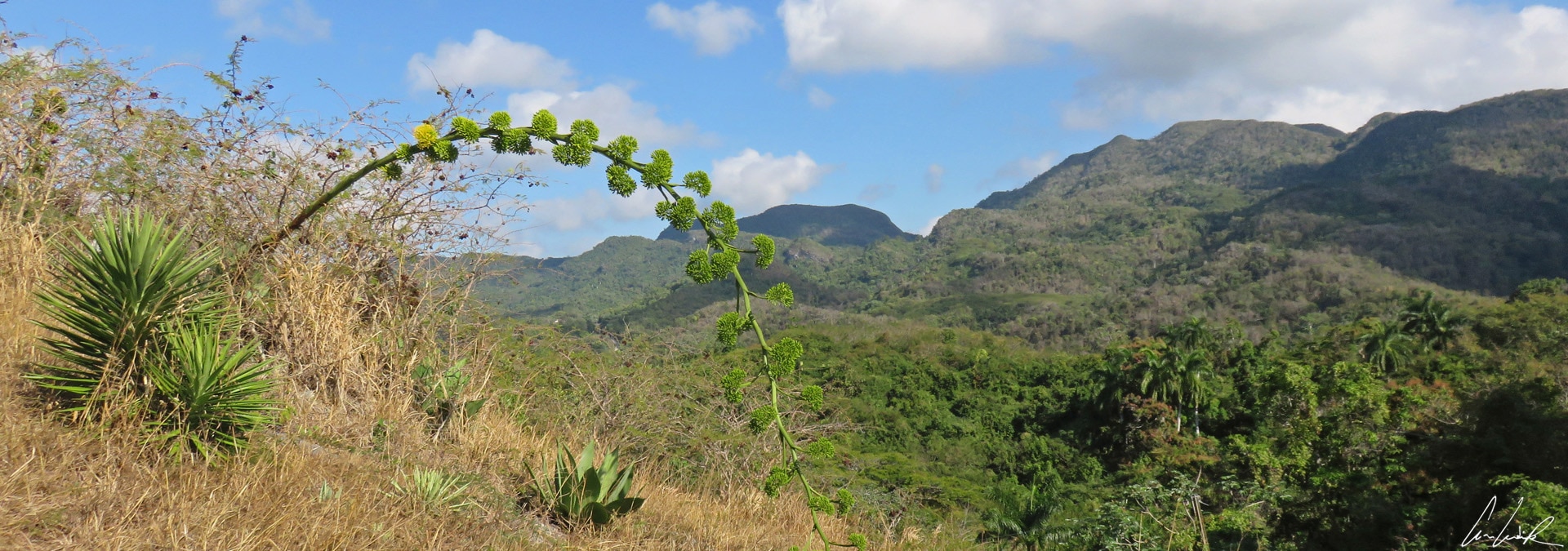
Sierra del Escambray
After this dive into the hectic life of “the City”, you probably want to relax and escape the noise and the crowd ? So let’s go together and discover mother nature in the surroundings of Trinidad. The region has plenty of opportunities for short hikes! About ten miles to the North of Trinidad is the Sierra del Escambray, a mountain range of 55 miles from East to West and 25 miles wide in South Central Cuba. The Sierra is characterized by its exuberant vegetation (Sisal, coffee trees, pines, orchids, bamboos, eucalyptus, etc.), deep valleys, caves, rivers, waterfalls and natural pools. Its highest peak, the Pico San Juan, rises to 3,740 feet above sea level. On the historical side, the Escambray range was a refuge for the anti-Batista rebels led by Che during the Revolution (starting in 1958), and then later the Escambray hid the anti-Castro rebels. But enough talk, let’s get going with our backpack. The birds sing, there is a lot of greenery, a powder-puff tree or Calliandra and the landscape is so relaxing… Suddenly our path crosses that of a Gray Kingbird (also known as pitirre, petchary, or white-breasted kingbird) and a thrush… Don’t panic; it is only two species of sparrows. High in a tree, the red-legged thrush welcomed us with a slow “weecha” and a fast “chu-wéek chu-wéek chu-wéek”. Indeed, its melody can seem monotonous ! Finally, after a short hike in the incredible scenery of Cuba’s Parque Natural el Cubano we arrive in front of the Salto del Caburní, at 70 feet the highest waterfall in Cuba. It falls between rocks into a crystal clear natural swimming pool. One or two “Plouf” to cool down before resuming our hike amidst lush vegetation: papyri, orchids, and trees that do not lack thorns… Wait, wait, is that not the holy tree Ceiba with its smooth trunk covered with big thorns? It looks like a giant rose bush! We walk along el Camino (path) crossing bridges and a river and sometimes getting our feet wet. We stop at several places to swim (El Ocuje, La Pomarrosa etc.) and pass honeycomb-like rock walls… until we reach the Salto de Javira… the place is beautiful. And then, everybody jumps into the fresh water !
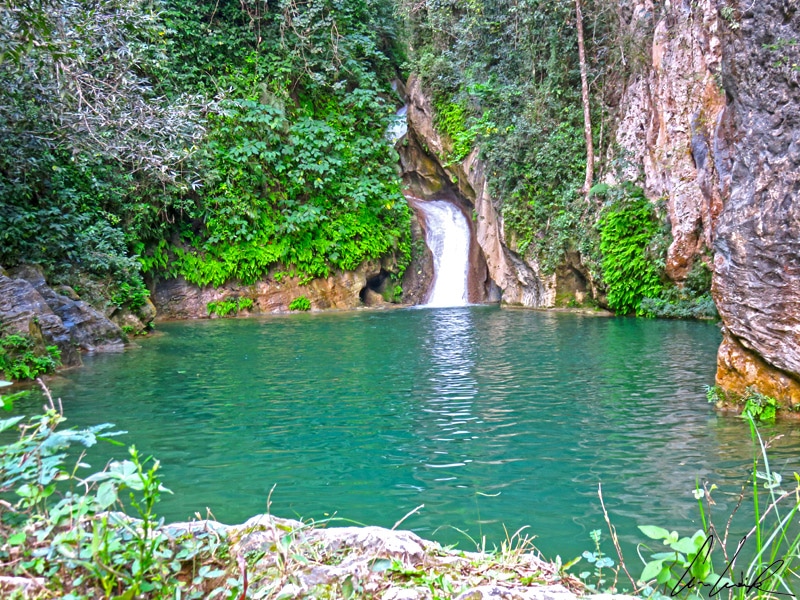
Salto del Caburni, crystal clear natural swimming pool
In the late afternoon, it is pleasant to stroll in the Valle de Los Ingenios also named Valley of the Sugar Mills about 8 miles outside Trinidad. The Valle de Los Ingenios is a series of three interconnected valleys, San Luis, Santa Rosa and Meyer and stretches for 25 miles between Trinidad and Sancti Spiritus. The site offers splendid landscapes of cultivated fields, small hills, rich and ancient haciendas, planters’ houses, and slave-quarters. You plunge into a history book when visiting the valley. In chapter after chapter, you learn about slavery, large landowners, and the sugar economy. In Spanish, “Ingenios” means “sugar cane mills”. Until 1850 (the fall of the price of sugar), the valley was a sugar-rich economic center with more than sixty sugar cane mills and more than 11,000 slaves forced to work for the industry. In the center of the valley, the seven-floor Torre Manacas-Iznaga stands 147 feet high and is topped with a lookout and a bell. The magnificence of the tower symbolizes the power of the Iznaga family, its status in the sugar cane industry and its aristocratic lineage. The tower was built in 1816 by a slave named Alejo Maria del Carmen Iznaga, who later became a rich sugar-merchant (surely using his own slaves to make money !). According to Cuban (or urban) legend, the tower would have served as a lookout to watch slaves working in the fields… or perhaps to lock up a girl with long hair… There are several legends and I do not have the exact “answer”. Today, what it is certain, you will be able to take superb photos of the valley from the top. As for the bell that once announced the beginning and the end of the working day in the heart of the valley, it now rests at the foot of the tower.
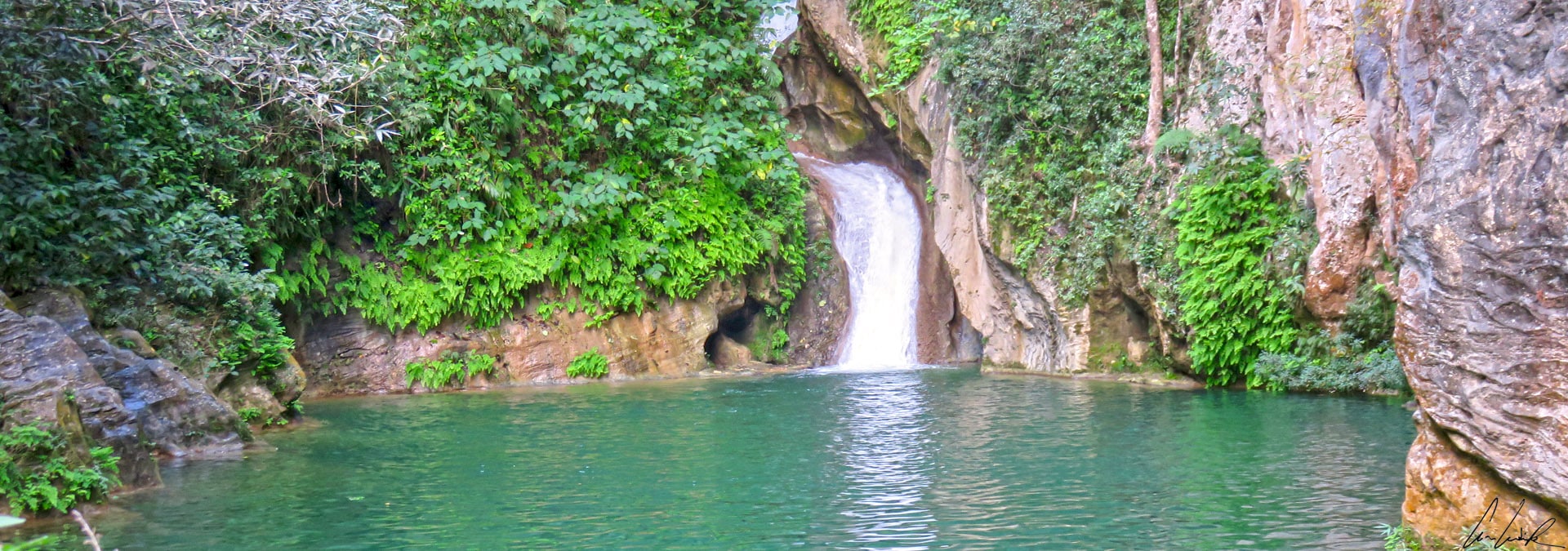

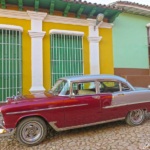

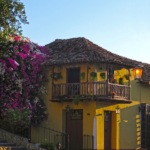
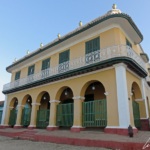

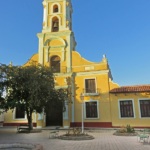
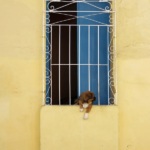
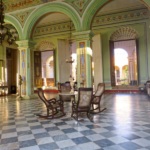
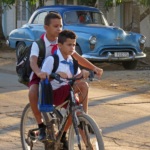
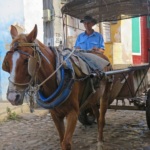
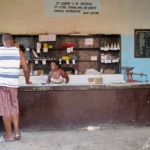
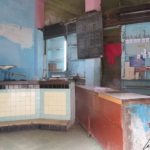
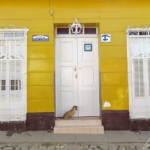
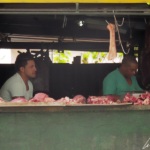

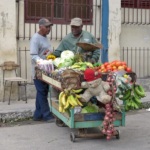
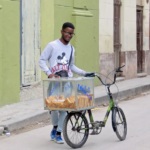
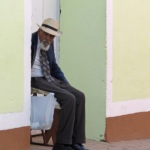

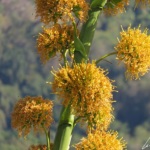
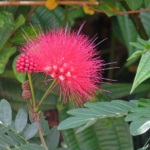

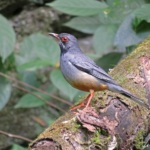
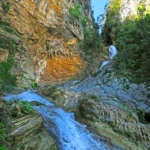


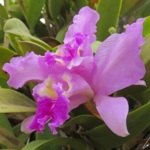



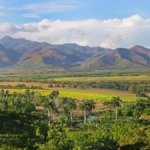

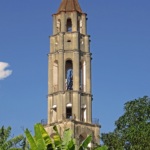


Celine,
This is so gorgeous!
How long did you stay for? Did you have issues with the wifi/internet in general?
Telma @ blank Canvas Voyage
Thank you :-). I did a 2 weeks trip in Cuba. There is no free WiFi in Cuba and it is expensive. To gain access to WiFi, you have to purchase a card from a ETECSA telecommunications centre… The cost for the card is around 1.50 CUC / $1.50 and it gives you one hour of online internet access in Cuba. So, during our 2 weeks trip, we logged on to the internet and WiFi in Cuba 2 times.
Cuba is on my bucket list, definitely 🙂
For sure this country, full of contradictions, will not leave you indifferent 🙂
Lucky you, you must have stayed here for a while! I only had a few hours in Trinidad, and my driver (who also decided to take his wife with him on our tour!) did not speak any English, so I only learned what I read on my phone in Lonely Planet 🙂 My favorite part of this city was the little, colored houses, moving away from the very center there at last were not so many people bugging us to buy stuff. Combined with raging sun it does get on your nerves 🙂 I wish I had the chance to… Read more »
Trinidad is one of Cuba’s most charming colonial towns ! We visited the historical center early in the morning when nobody is there and only the locals are on the streets… It was such a quiet time for a visit. We took a rental car so we were free to drive & visit small villages and also parks far away from any tourist spot. There are certainly difficulties in driving in Cuba but with planning and common sense you can handle them 🙂
I really want to visit Cuba and see the pastel houses and vintage cars! Salto del Caburni looks so peaceful.
I enjoyed your song quotes!
Thank you :-). Cuba is a country that appeases your senses without trying. There’s always something to see, the smell of cigars and the taste of rum, but overall it’s the music creating a continuous backing soundtrack that really sets the scene !
I’m going to Trinidad next week! This is going to be so helpful!
Have a nice trip 🙂
I am embarrassed to say I hadn’t even heard of Trinidad in Cuba. It looks so beautiful and I really want to get there soon. I visited years ago on a resort holiday but didn’t see the country unfortunately:(
Cuba seems to be lost in time, somewhere in the 1950’s and it’s not only the old American cars in the streets or the exquisite colonial architecture with peeling paint in Old Havana.It is an island that assaults the senses (the visitor is greeted with strains of exotic rhythms such as salsa or rumba).
Wow such a detailed post and great photos! I would love to visit Cuba some day, thanks for sharing!
Thank you 🙂 Cuba was such a great experience !
Cuba is so high on my list, it looks so beautiful!
Cuba has to be one of the most cultural countries that I have ever been to and the town of Trinidad is definitely my favorite place on the island.
What a beautiful area to explore. Love how colorful and authentic Cuba still is. Hope to see it before it changes too much with more and more influence from abroad.
The past twelve months have seen more changes in Cuba than, arguably, over the previous 12 years. The number of tourists has increased, Internet access has increased as well… But much of what makes Cuba unique remains: the classic cars are still there and the crumbling yet strikingly beautiful architecture of Havana is the same 🙂
So is it no problems for Americans to visit Cuba anymore?
Cuba is a country in motion and I don’t just mean the various modes of transport you’ll find yourself taking.The country hasn’t completely opened up, but the door is slowly moving further ajar. While relations between Cuba & the United States are improving, it’s still technically illegal to travel there… Even though travel to Cuba for Americans is restricted, that doesn’t make it impossible to visit 🙂
It looks so amazing here! I really want to go and I’ve been meaning to for years. Definitely need to make it happen!
Yes, just do it 🙂 Cuba does not leave you unchanged !
Cuba’s an incredibly country isn’t it? Your writing and pictures really capture it well x
To travel to Cuba is to dive into the heart of a story, both magnificent and terrible, and to give yourself the opportunity to form an opinion, certainly more nuanced and complex than the common clichés.
Beautiful photos – we’d love to visit Cuba soon as I know a lot of people are predicting a lot of change there in the next few years. It seems like an amazing blend of nature and interesting cities.
Want to see Cuba before it changes? Well, it already has. Has Havana changed ? The short answer is not significantly, yet – but it is evolving. However, much of what makes Cuba unique remains: the classic cars are still there and the crumbling yet strikingly beautiful architecture of Havana is the same.
Cuba is the place to be! It is so colorful and magical. Loved reading your informational post, Céline!
Thank you 🙂 Miles of white sand beaches, small tucked away towns, striking architecture, clear blue waters and the best cigars in the world are all found in the lovely country of Cuba !
In my wishlist Cuba. Surely traveling soon.
Cuba is one of the best places I have ever been. Would love to go there again, just a wonderful place to be!!!
I agree with you, Cuba such a special travel destination 🙂